
Dog Internal Organs Anatomy Anatomy of a Male Dog Internal Org Stock Illustration
External Anatomy Dogs, like all mammals, have eyes, a nose, a forehead, and ears. The only difference is that their noses are cold and wet, and their ears can be either dropped, erect, or cropped, depending on the breed. They also have a throat, a flew (the upper lip), chest, fore and hind legs, back, stomach, buttocks, and a tail.

Anatomy of Dog with Inside Organ Structure Examination Vector Illustration Stock Vector
Heart. A dogs heart beats between 70 and 120 times per minute, compared to a humans 70 - 80 beats per minute. Dogs take between 10 and 30 breathes every minute. Dogs have a visual range of 250 degrees compared to the human range of 180 degrees. A dogs temperature is between 100.2 and 102.8 degrees Fahrenheit.

Dog Veterinary Print 1920s "Internal Organs Of Male Dog " Ideal for Framing.
This canine internal anatomy poster illustrates the internal anatomy of a dog in beautifully rendered detail. This dog organ anatomy poster has been designed exclusively for AnatomyStuff and is medically accurate, making it the perfect choice for display in a veterinary classroom or practice, or in a vet clinic for owner education.. This canine organs chart offers the following features:

Внутренние органы собаки. Вид слева Dog Internal Organs, Anatomy. Left Anatomy Pinterest
Anatomy atlas of the canine general anatomy: fully labeled illustrations and diagrams of the dog (skeleton, bones, muscles, joints, viscera, respiratory system, cardiovascular system). Positional and directional terms, general terminology and anatomical orientation are also illustrated.
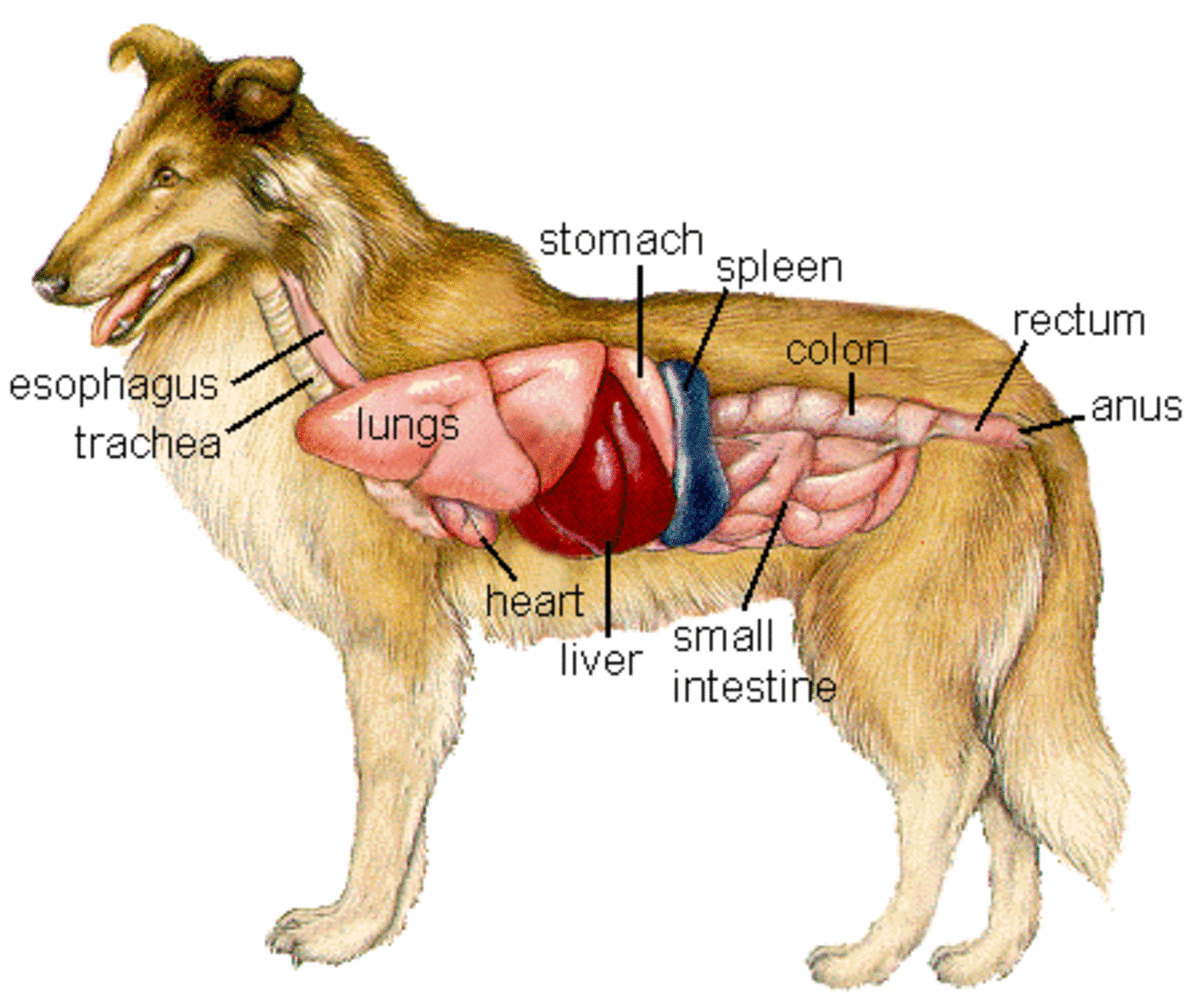
Coughing in Dogs May Signal Heart Disease HubPages
From the external (outer) to the internal part of the dog's abdomen, you will find the following muscles serially -. All the abdominal organs of the dog may normally vary in size and position. The stomach, uterus, urinary bladder, and spleen vary more than other organs of the dog's abdomen.
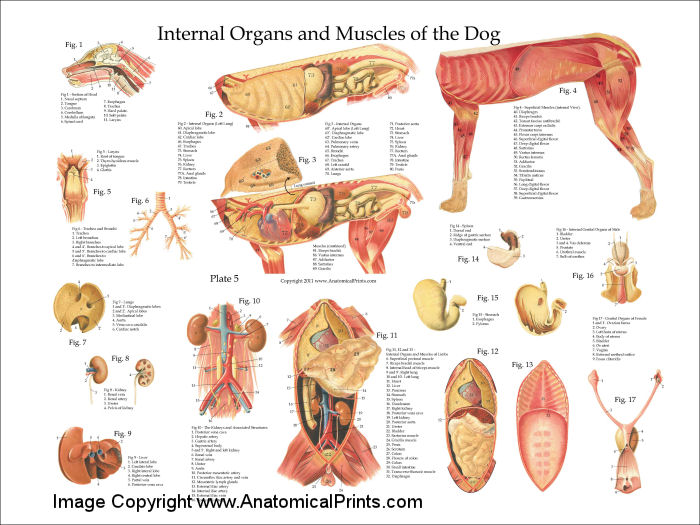
Dog Internal Anatomy Poster
Demo of the "Glass Dog Anatomy" program. This animation introduces first-year veterinary students to the anatomy of the dog's thorax and abdomen.©UGA

Dog Internal Organs Anatomy Anatomy Of A Male Dog Stock Photo Download Image Now iStock
Again, the internal organs and structures like the trachea, esophagus, course of the carotid artery, jugular vein are also crucial for a pet animal practitioner. It would be best if you also had a piece of good knowledge of the superficial lymph nodes of the dog neck.

Internal Organs Of A Male Dog. From Photograph by Ken Welsh
On the left side view of a dog's internal organs, you can see the lungs, heart, liver, stomach, spleen, kidney, intestines, bladder, and the rectum in that order from front to back. You can also view the spinal column and the brain. Laurie O'Keefe Dog Anatomy Organs Right Side

Dog Internal Organs Image & Photo (Free Trial) Bigstock
Quick idea: in this article, you will learn the location of different organs from the different systems (like skeletal, digestive, respiratory, urinary, cardiovascular, endocrine, nervous, and special sense) of a dog with their important anatomical features.
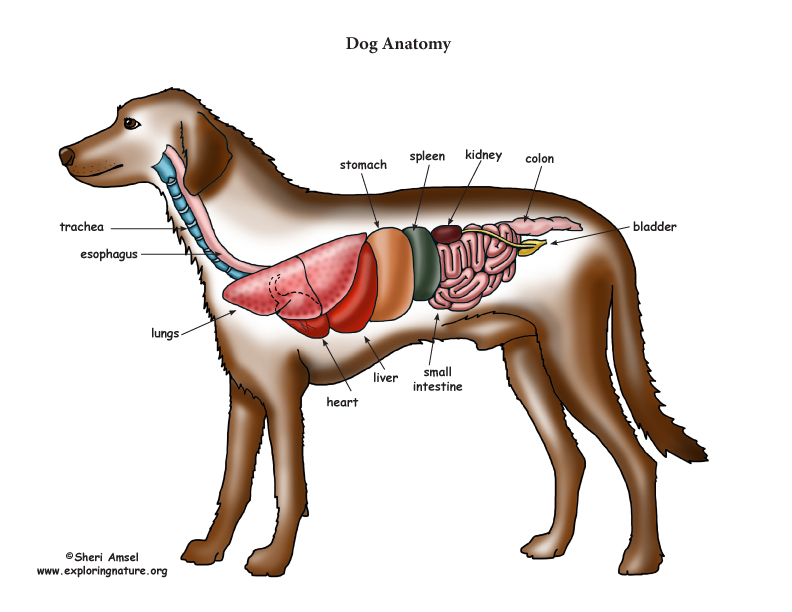
Dog Anatomy (Thoracic and Abdominal Organs)
Summary Anatomy of a Dog Dog anatomy details the various structures of canines (e.g. muscle, organ and skeletal anatomy). The detailing of these structures changes based on dog breed due to the huge variation of size in dog breeds. Would you be surprised to know that short dogs are more aggressive? Or taller dogs are more affectionate?

Dog Internal Organs Anatomy Anatomy of a Male Dog Internal Org Buy this stock illustration
Dogs have a third trochanter, which is the attachment site of the superficial gluteal muscle.. The ribs limit overall thoracic spine motion and protect internal organs. Joint Motion. The body segments of the forelimb and hindlimb are illustrated in Figures 5-3 and 5-4, respectively, with the major joints and their flexor and extensor surfaces.

Anatomy of a male dog crosssection, showing the skeleton and internal organs. Colour process
Canine anatomy Dog skeleton Muscles of the dog Organs of dogs Canine anatomy As we explain above, canine anatomy is far ranging due to the diversity of existing breeds. These different breeds not only differ from each other in size, but in the shape of many body parts. Perhaps the most significant is head shape.
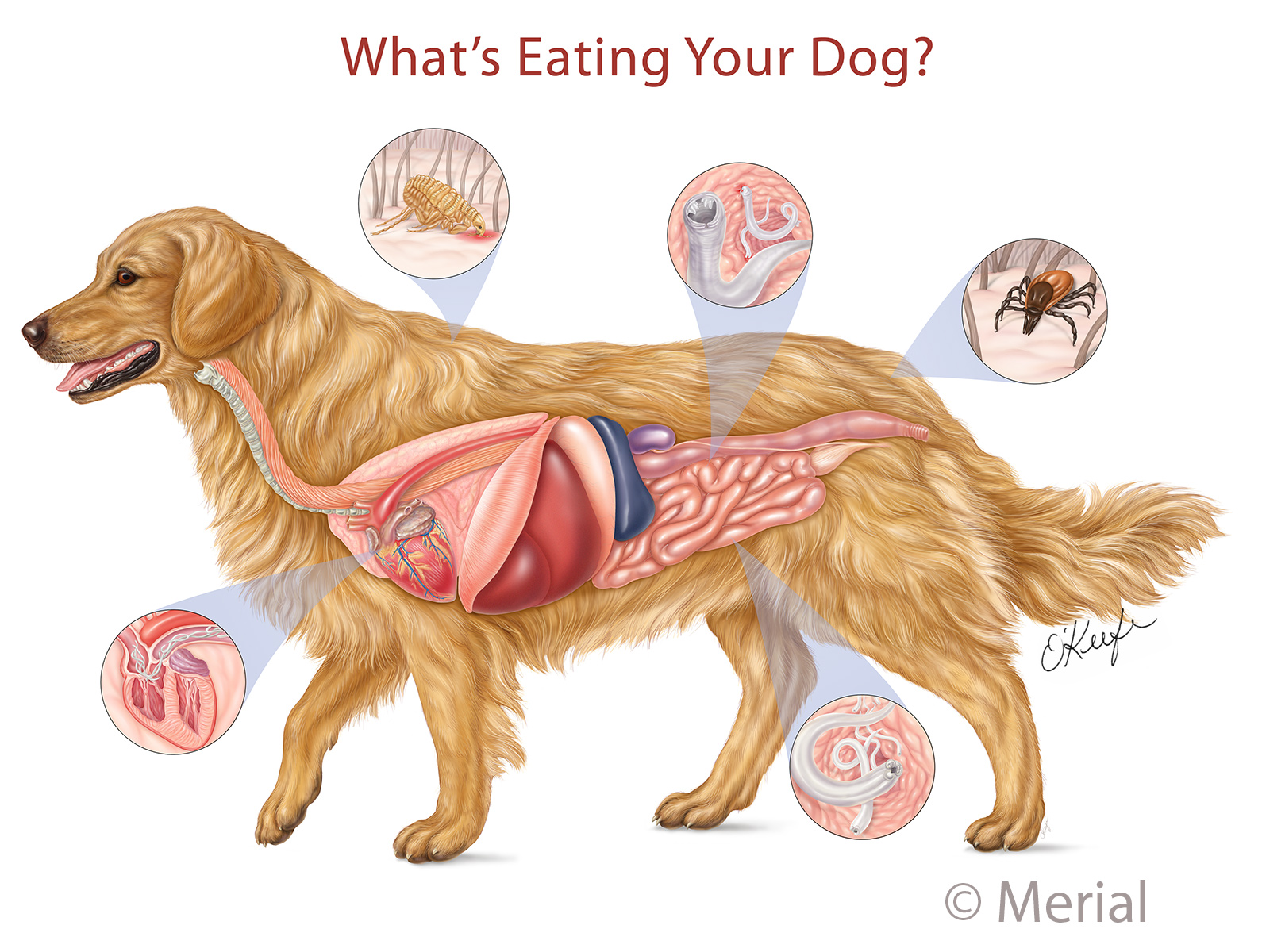
Dog Internal Anatomy Anatomical Charts & Posters
Diaphragm: The diaphragm is the primary muscle involved in breathing. When a dog barks, it contracts the diaphragm forcefully to expel air out of its lungs and through its vocal cords. Laryngeal muscles: The laryngeal muscles control the opening and closing of the dog's vocal cords, which are located in the larynx (voice box) in the neck.
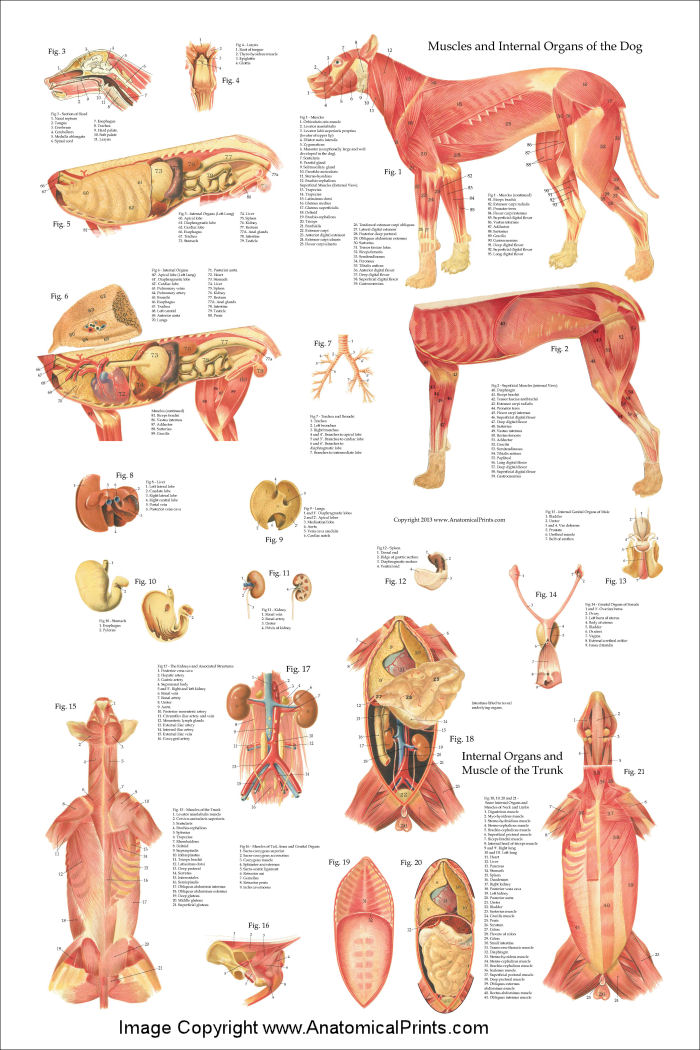
Dog Internal Anatomy Poster 24 x 36
Internal anatomy of a dog: carnivorous domestic mammal raised to perform various tasks for humans. Encephalon: seat of the intelluctual capacities of a gog. Spinal column: important part of the nervous system. Stomach: part of the digestive tract between the esophagus and the intestine. Spleen: hematopoiesis organ that produces lymphocytes.

A dogs internal organs stock illustration. Illustration of lung 146233528
The internal organs of a dog include the heart, lungs, liver, kidneys, stomach, intestines, and reproductive organs. These organs work together to keep the dog healthy and functioning properly. For example, the heart pumps blood throughout the body, while the kidneys filter waste products from the blood.

Dog Anatomy With Internal Organs 4k Textures 3D Model lupon.gov.ph
Dog anatomy comprises the anatomical studies of the visible parts of the body of a domestic dog.Details of structures vary tremendously from breed to breed, more than in any other animal species, wild or domesticated, as dogs are highly variable in height and weight. The smallest known adult dog was a Yorkshire Terrier that stood only 6.3 cm (2.5 in) at the shoulder, 9.5 cm (3.7 in) in length.